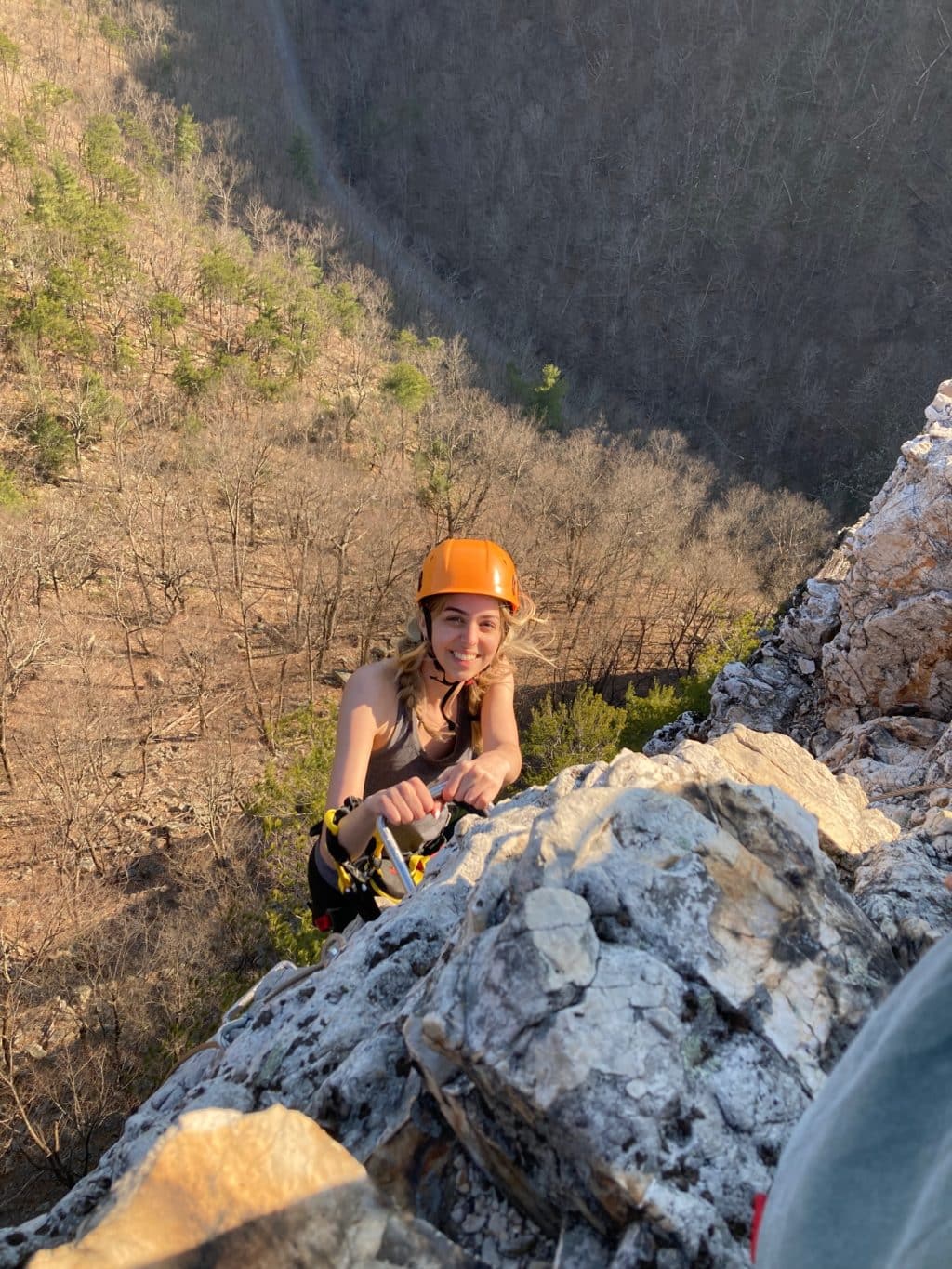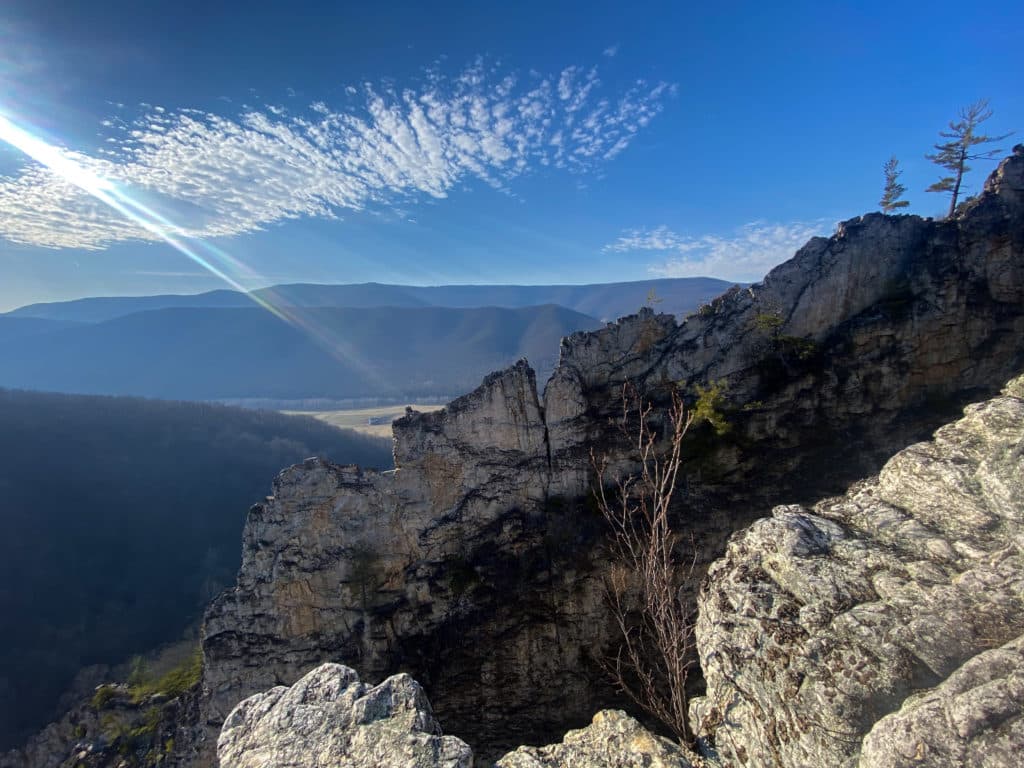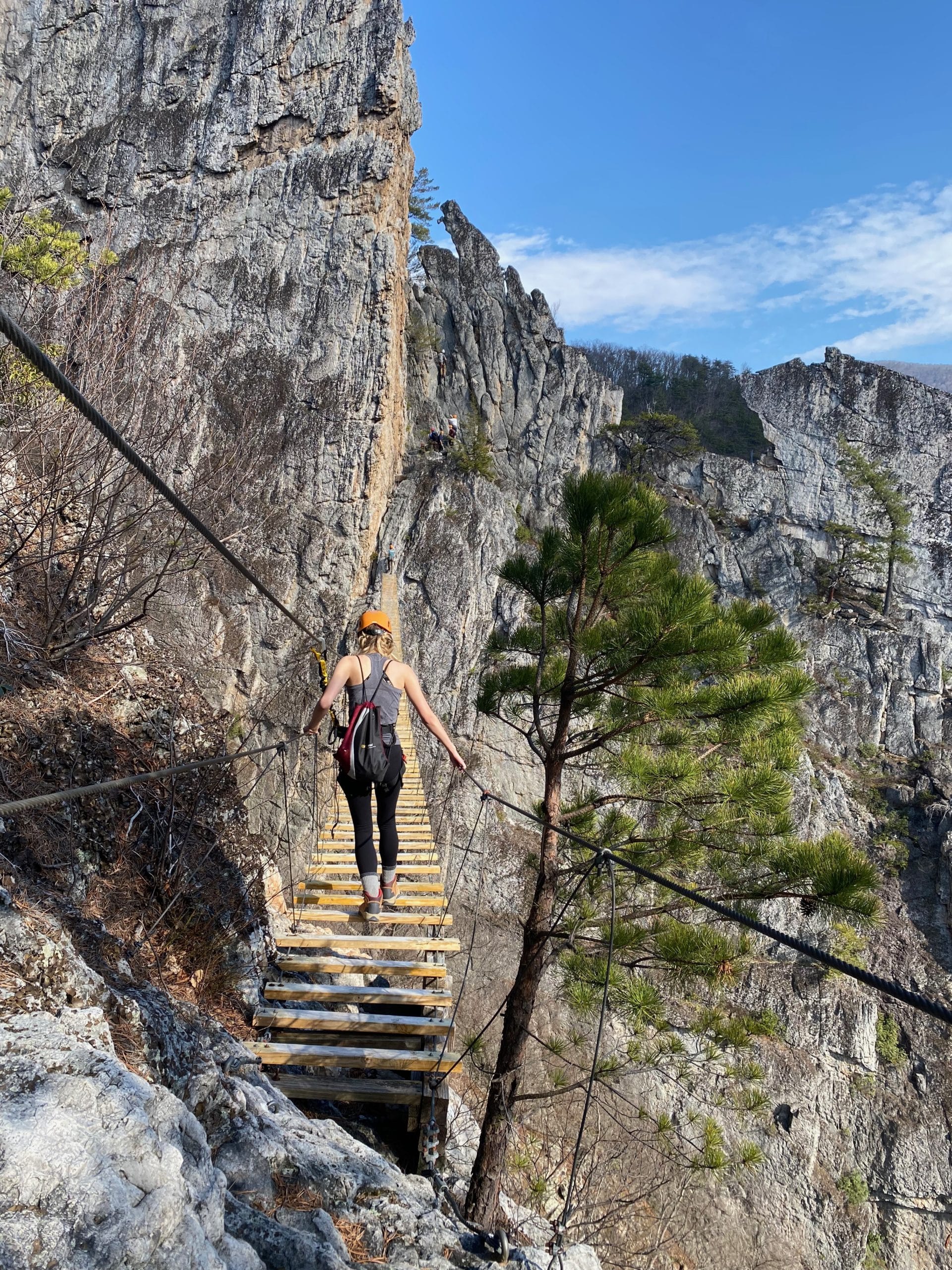A Novice Climber Faces Fears on West Virginia’s Via Ferrata
The sun beat down on me, wind whipping past as I moved from rung to rung, tethered to the cliff face only by the clips I moved one at a time. I had never climbed higher than the 20-foot wall at my local gym—yet here I was, 300 feet above the ground in West Virginia, looking out across miles of vast mountains and jagged cliffs.
Back in March, I climbed the NRocks Via Ferrata in West Virginia with my college’s outing club. Via ferratas are protected routes, which rely on rungs and cable systems in order to simplify the climbing experience.

In the past I’ve adopted a “you can never fail if you never try” philosophy. I felt that if I never climbed a series of cliffs that shoot several hundred feet into the sky, I’d have a surefire guarantee that I wouldn’t fall to my death.
But after a particularly depressing winter semester, I was looking to do something exciting to get out of a seasonal rut.
Via ferratas don’t require previous climbing experience, so in terms of skill level, I knew that I could do it. I was drenched in sweat as we hiked up to the first wall on an abnormally hot day in March. There, I was immediately intimidated by the sheer vertical rock face. One after another, the rungs climbed straight up towards the sky. As an overthinker, the type of person who kills time in line for roller coasters by intensely googling “probability of falling off of theme park rides,” I naturally tarted visualizing all of the things that could go wrong—a missed step, an accidental unclip, a collision with another climber.
The first couple of rungs, even though only a few feet off the ground, were the hardest. I instantly regretted not removing my acrylics, because trying to climb the face of the rocks with talon-like nails is—shocker—pretty difficult. I was shaky, going at a slow pace. I hugged the rocks for dear life, but with steady progression completed that first wall.
As we stood at the top, our guides reminded us that we could take the first of two exits if we felt we couldn’t complete the course. Stubbornly, though, I was determined to finish. I had already found a sense of accomplishment from the climb so far, even only 40 feet off the ground. I wasn’t going to back down.
After I passed the exit, the rest of the climb felt smoother, except for the suspension bridge. As I watched it bounce and shake as each person walked across, I decided that there was no way I would go on that bridge with anyone else on it at the same time. Looking down to see the terrifying drop between each wooden beam, I couldn’t get off it soon enough, although it did provide some beautiful photos.
Eventually, we made it to the hardest part of the trip—the headwall. The 100-foot vertical climb is optional, but my friends who had previously done the trip insisted it was a necessity.
I understood why once I got to the top. It was one of the most frightening things I’ve experienced to look down to see how far up we were. But at the risk of sounding cliche, the experience of being both completely awe-struck and terrified at the same time felt like a refreshing reminder of what it means to feel alive.
Doing this climb meant taking one step in the direction of becoming someone who doesn’t limit herself by getting stuck in a tangle of infinite what-could-go-wrongs. In the months to follow, I’ve found it easier to step further outside my comfort zone. Last month I jumped 30 feet off a footbridge—and then did it again on two other occasions. I also started putting myself in social situations that used to seem intimidating. I’ve driven all around Virginia this summer, exploring nature on my own, instead of needing to go with family or friends.

What I especially enjoyed about climbing the via ferrata is how I was in control of the process. It was up to me to navigate the course safely, to consistently stay clipped in, to pull myself up carefully, and to place my arms and legs exactly where they needed to go. I had to fully trust my own instincts. And though I often doubt my abilities, I didn’t let myself down. I eventually got so into the flow of the climb that I was no longer thinking about all the things that could go wrong. I just kept thinking about my next move—and I’ve realized that’s all I really need to be doing.
Trip Recap: Via Ferrata at NROCKS
Trip Time: 3.5-5 hours
Elevation Gain: 1,085 feet
Location: Circleville, W.Va.
Cover photo by Jenny Hellwig








